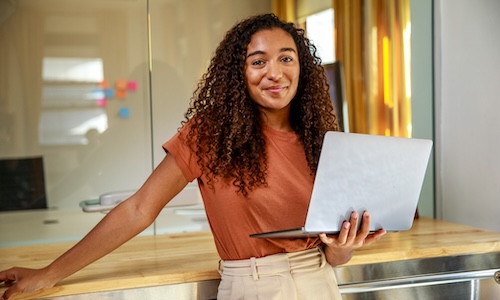What Makes a Good Learning Experience?

We all remember the learning experiences that shaped us. Maybe it was an assignment in school, or something that happened in daily life. Whatever your transformative learning experience was, it connected with you, and suddenly something made sense.
You learned something, and your perspective of the world shifted a bit.
Not every learning experience can be a transformative one, but strong learning experiences — the kind that stick with you — are at the heart of L&D (Learning and Development). But what makes a learning experience? And how can you consistently deliver the kind of learning your team will respond to?
What makes a good learning experience?
A learning experience is any experience one learns from.
A good learning experience, however, should be relevant to the learner and engage them in the core concepts that will help them remember what they’ve learned. This doesn’t necessarily mean that the learning experience needs to be fun, but it does mean that the learners are involved with the material. It should speak to their experience or to their needs. For workplace training, it means the learners should be able to see the connection between the learning and their experiences or responsibilities at work.
According to the Association for Talent Development, a good learning experience creates a positive emotional reaction in the learner. They might feel a range of emotions, including accomplishment, curiosity, or simply the desire to put the new information to use.
A quick note: the difference between a learning experience and a learning activity
A learning experience is not quite the same as a learning activity. A learning activity is the actual activity itself: the content, the module, or any other planned activity the learner is engaging in. A learning experience is more nebulous. It refers to the personal experience of the learner who is engaging in the activity. It’s about the learner’s journey, not a single activity.
In other words, one or more well-designed learning activities can lead to a good learning experience.
The anatomy of a good learning experience
Great learning experiences aren’t all the same, but they do have some similarities. Here are a few of the things they have in common:
- They recognize and address learner needs.
- They provide a means of building a skill or providing deeper understanding about an issue.
- They allow learners to easily participate in learning.
- They show learners how the information can be applied.
- They allow learners to reflect on the information.
- They allow the learner to personalize the lesson so the experience is truly theirs.
Tips for creating great learning experiences
You know the old saying “You can lead a horse to water, but you can’t make them drink?” It can sometimes apply to learning experiences. They’re personal experiences owned by the learner themselves; you can’t force anyone to participate in your learning program or enjoy it. However, you can take a few steps to ensure that your learning activities make for a better learning experience.
- Make sure everyone can access the learning: Learning cannot be effective if it’s not accessible. This means making certain all learners can see and interact with it, and it also means making the learning easy to find and use. This may involve centralizing your learning materials in a learning management system or providing the same learning in different formats, for example.
- Make it engaging: A good learning experience must hold the learner’s attention. This means it should be relevant and interactive. You can also use tools like gamification to help keep the attention of your learners.
- Don’t overdo it: You don’t want to overwhelm your learners with information. Instead, prune irrelevant information and keep the module focused on the lesson you need your team to learn.
- Allow for personalization: No two people learn in the same way. By creating learning pathways, you can meet your learners where they are and build on their existing knowledge.
It’s important to note that good learning experiences are about more than content. They’re about the learner’s motivation to learn the materials and the delivery of the content. It’s your job to present the content in the most engaging, easiest way possible — then your learners are free to have great learning experiences.


